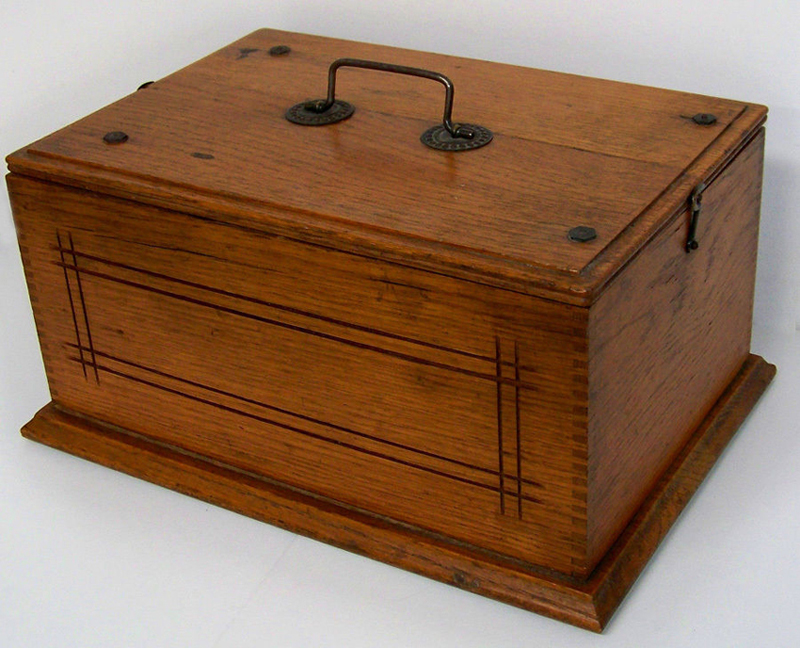

This odd little machine was marketed by the E. S. Pease Co. of New York in 1908.
It was disingenously advertised as "not an imported toy," masking the fact
that it was an imported machine. The design is classically European, especially
the reversible lid and the mechanism, which is clearly based on the Columbia 'Eagle'
as very many European phonographs were. However this version has an open spring with
no barrel, which is hidden along with the governor underneath a metal cover. The
ornate winding key is a close copy of the Columbia "Q". The large diameter
reproducer is unique to this very basic machine. The diminutive (only 14" long) morning glory horn,
however, was almost certainly sourced from an America supplier. Original ads show the horn supported variously by a table stand or a crane mounted either to the front or rear of the machine. The advertisement below appeared in the January 1909 issue of Talking Machine World. Other ads appeared between July and October 1908.


Aside from the miniature morning glory horn, what makes this inexpensive phonograph so charming is the lovely oxidized copper finish, sometimes referred to as 'tiger striping.' Note that while the mainspring and governor are hidden, the drive gears are outside of the enclosed motor assembly.

The phonograph mechanism can be turned upside down, revealing a thin handle under its base and neatly enclosing the machine in a crudely but attractively decorated oak case. Small latches on the sides secure it. The Crown is quite scarce, with only a few survivors reported.